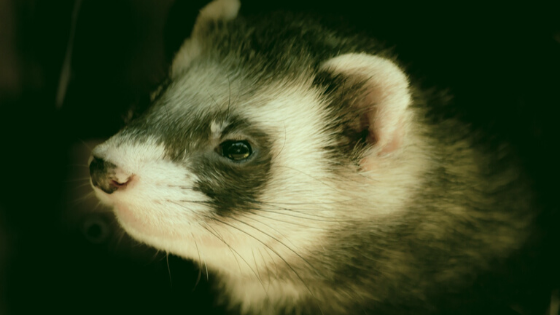The ferret is a small domestic species. It is a member of the mustelid family, and is most likely a domesticated form of the wild polecat. Other mustelid species include the stoat, badger, and mink. Its interfertility makes it an excellent choice for home pets. This article will help you choose the perfect pet. We’ll look at its size, color, odor, and physical characteristics.
Also Read: the pet blog lady celebrating our pets
Size
The ferret’s head is compressed dorsoventrally and elongated rostrocaudally. Unlike cats, the ferret lacks the sutures that connect the skull to the neck. Their jaws are powerful and have large canines and reduced molars. Their mandibular teeth sit within the maxillary teeth when closed. Their dental formula is I-3/3, C-1/1, P-4/3, M-1/2.
Standard ferrets range in size from 44 to 46 cm from the tip of the tail to the nose. Males are bigger than females and reach full size in about five months. Standard ferrets are less expensive than Angora ferrets, but are smaller than Angoras and Whippets. Ferrets usually experience a 40% loss in body weight each summer. Their fur, however, does not shed.
Sea otters are larger than ferrets. They are often seen off the western coast of the United States, where they live in salty waters. The Arizona Game And Fish Department even holds an annual black-footed ferret count. Sea otters are also larger than ferrets, and they live in the Pacific Ocean. If you want to see an exotic ferret, consider going on a wildlife tour with a professional guide.
To enrich the ferret’s diet, provide treats and nutritious foods. Ferrets enjoy chewing on rubber toys. However, these toys can be harmful for your ferret if the pieces get ingested. Ferrets can ingest these rubber bits and cause a blockage in the intestine. It is best to provide a healthy, commercial ferret food to help them grow up.
Color
There are several types of ferrets, all of which vary slightly in color. The most common of these is the dark-sable ferret, which has black or dark-brown legs, a cream-colored undercoat, and a pink-to-purple tail. However, ferrets that are silver in color may have black eyes and a pink nose. They may also have white guard hairs.
The other type of ferret is the albino. Albinos are characterized by the lack of pigmentation. They have white guard hairs and undercoats, but may have a yellow hue from excessive oil production. Albinos also have red eyes and reddish-orange prickly-red skin. In addition to their lack of pigmentation, ferrets with red eyes are called champagne ferrets. Champagne ferrets are also called Sandy in many parts of the world. They are characterized by their white body, cream undercoat and light brown or beige guard hairs.
Ferrets can be mostly white or can have a dark, chocolate-brown undercoat. This makes them very similar to cats. If you notice white feet, you may have a cinnamon-colored ferret. They may also have a bib or a white knee spot. Some of these cats have the same coloring as humans, so you may see some variation between these two types. You should always consult a vet to learn about your ferret’s exact color and markings.
Odour
One thing that will make you question the odour of a ferret is its smell. The odour of a ferret is quite distinct, and it depends on your sensitivity to smell. If you have ever had a ferret, you know that its smell is not for everyone. However, there are some things you can do to minimize its odour. Here are some tips to do that.
First, you should neuter or spay your ferret before you bring him home. Neutering will prevent the ferret from having unwanted litters, as well as improve its health. Store-bought ferrets are typically neutered before they enter the pet trade, but some ferrets may not have undergone this procedure. While neutering or spaying your ferret will not eliminate the odor problem, it may help to reduce it in male ferrets.
Ferrets are not the only animals with an unpleasant odor. Although ferrets can be smelly, they will usually not release their stench while in your home. The odor is also not harmful if you take precautions to avoid the smell at all times. In some cases, you may even want to take the ferret home with you so you don’t have to deal with this issue.
Physical characteristics
The black-footed ferret is an omnivorous animal. They will eat almost any animal, including rabbits, mice, rats, and snakes. They will also consume insects and bird’s eggs. Their diet is very diverse, though, and most of it is prey. The primary predators of ferrets are other ferrets and birds of prey. This is the reason why the black-footed ferret is endangered.
The common ferret is very small, with a long, slender body and short legs. It is about 50 cm (20 inches) long and has a tail that is thirteen centimeters (5.1 in) long. It has a slender face and brown fur. It is blind when born, but develops eyesight when it is a month old. Male ferrets have a longer face than females and are larger than females.
The black-footed ferret is the only native species of ferret. It has black-tipped tail and a long, sinuous body. The black-footed ferret is also the only one native to North America. Black-footed ferrets have black feet and tail and a white muzzle. The male ferret is much larger and heavier than the female. The black-footed ferret is also a bit smaller than its white-fledged counterpart.
Ferrets spend most of their time sleeping. They prefer a dark, enclosed environment. When they are awake, they play intensely and burrow into bedding to explore. They also have an amazing sense of hearing. They are sensitive to sounds and can even hear what you’re doing. Their high-pitched screams are an indication that they’re frightened or fighting. They also emit a low-pitched rumble when they’re foraging. Their limited vision means they often nip and bite at moving objects.
Care
Ferrets need special care to stay healthy. They are small and delicate, but their body temperature changes can affect how well they feel. Ferrets need to be regularly vaccinated. If you notice a change in your ferret’s behavior, you should see your veterinarian. The veterinarian can recommend a course of treatment if necessary. It is also important to keep your ferret clean at all times.
Ferrets should have yearly or biannual visits to the veterinarian. This includes annual vaccines and diagnostic procedures. It is important to note that ferrets can catch the human common cold. The veterinarian may recommend routine blood work and radiographs, depending on the condition of your ferret. Vaccinations are important for the health of your ferret, as they can help prevent many serious illnesses. Ferrets should never be exposed to extreme temperatures, which can lead to heat exhaustion and death.
Ferrets must be given fresh water twice a day. They may refuse to drink cold water, which can cause dehydration. Bathing your ferret once a month is recommended. Bathing your ferret too frequently can cause its skin to become dry and irritated, making it smell worse. Your ferret should have a clean water bowl and food dishes. This way, you will know that they are healthy.
Health care
There are a variety of medical conditions that can affect your pet ferret, and you should be familiar with the best treatment options. Common health conditions include adrenal gland disease, foreign body ingestion, gastrointestinal and cardiac diseases, and thyroid and pancreatic cancer. Your ferret is also at risk for contracting flu, canine distemper, and other diseases from other pets. For these reasons, it’s important to establish a relationship with a veterinarian.
You should visit the veterinarian at least once a year to ensure your ferret’s health. Your veterinarian will check your ferret’s teeth, ears, heart, lungs, and abdomen. Vaccinations for distemper and rabies are also recommended. In addition, your veterinarian will check for internal parasites and ear mites. Your pet’s annual exam should include a complete physical examination, but you can skip this visit if you choose not to.
While most ferrets thrive on a good diet, some can be prone to some illnesses. Epizootic catarrhal enteritis (ECE), otherwise known as “green slime disease,” is a viral infection that can cause lethargy and diarrhea. There is no specific treatment for ECE, but it can damage the liver and lead to death. To protect your pet from this condition, you should visit your veterinarian as soon as you notice any symptoms.





